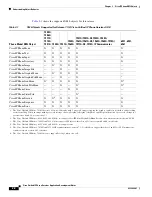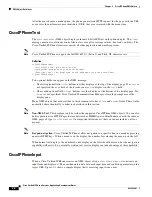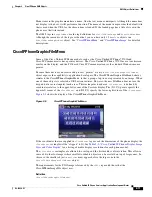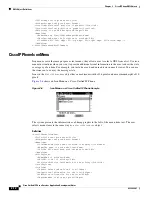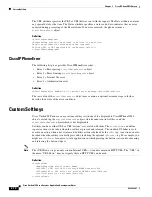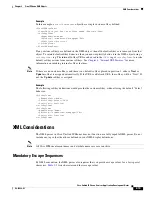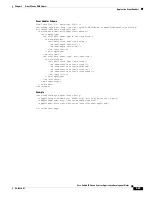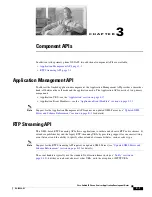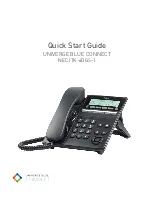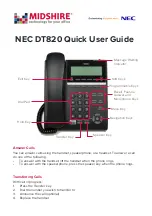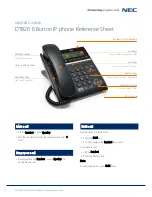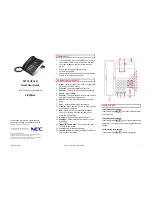
2-12
Cisco Unified IP Phone Services Application Development Notes
OL-18696-01
Chapter 2 CiscoIPPhone XML Objects
XML Object Definitions
<Title>Image Title goes here</Title>
<Prompt>Prompt text goes here</Prompt>
<LocationX>Horizontal position of graphic</LocationX>
<LocationY>Vertical position of graphic</LocationY>
<URL>Points to the PNG background image</URL>
<MenuItem>
<Name>Same as CiscoIPPhoneGraphicMenu</Name>
<URL>Invoked when the TouchArea is touched</URL>
<TouchArea X1="left edge" Y1="top edge" X2="right edge" Y2="bottom edge"/>
</MenuItem>
</CiscoIPPhoneGraphicFileMenu>
CiscoIPPhoneIconMenu
Icon menus serve the same purpose as text menus: they allow a user to select a URL from a list. Use icon
menus in situations when you want to provide additional visual information to the user to show the state
or category of an item. For example, you include a read and unread icon in a mail viewer. You can use
the icons can to convey the message state.
Icons in the
CiscoIPPhoneMenu
object have a maximum width of 16 pixels and a maximum height of 10
pixels.
Figure 2-6
shows an IconMenu on a Cisco Unified IP Phone.
Figure 2-6
IconMenu on a Cisco Unified IP Phone Sample
The system presents the information as a bitmap graphic to the left of the menu item text. The user
selects menu items in the same way as a
CiscoIPPhoneMenu
object.
Definition
<CiscoIPPhoneIconMenu>
<Title>Title text goes here</Title>
<Prompt>Prompt text goes here</Prompt>
<MenuItem>
<IconIndex>Indicates what IconItem to display</IconIndex>
<Name>The name of each menu item</Name>
<URL>The URL associated with the menu item</URL>
</MenuItem>
<SoftKeyItem>
<Name>Name of softkey</Name>
<URL>URL or URI of softkey</URL>
<Position>Position information of the softkey</Position>
</SoftKeyItem>
<IconItem>
<Index>A unique index from 0 to 9</Index>
<Height>Size information for the icon</Height>
<Width>Size information for the icon</Width>
<Depth>Number of bits per pixel</Depth>





